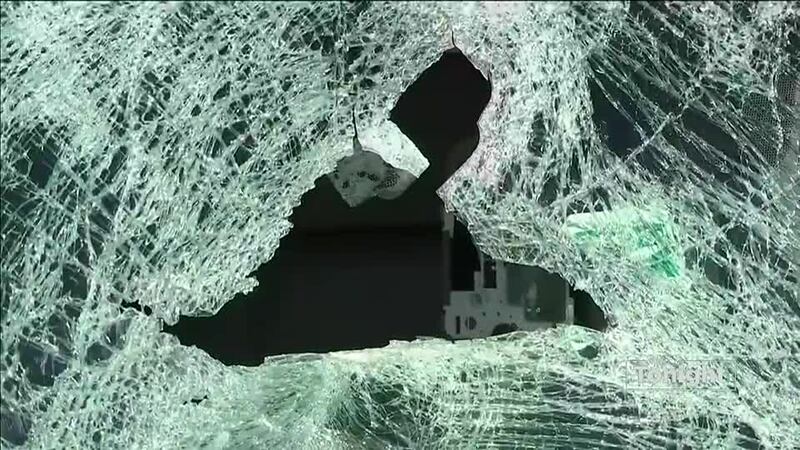SEATTLE — As the number of reports of debris being thrown onto highways continues to climb, the Washington State Department of Transportation calls for arrests and accountability over tangible infrastructure like fencing.
Free-falling electric scooters. Rideshare bicycles crushing Teslas. Chunks of rock and concrete blowing out windows. Heavy metal street signs nearly causing injury. Even rebar harpooning a windshield.
These are just a handful of the horrific incidents that have taken place on major King County thoroughfares in recent months.
In total, 161 cases of debris being launched onto roadways have been reported to the Washington State Patrol since April. The majority occurred in the downtown Seattle corridor.
WSP has taken a heavy-handed approach by increasing patrols on the ground, and putting eyes in the sky.
Traffic cameras from Washington State Department of Transportation work to fill in the blanks.
“We can turn our cameras there so we can spot something to get a closer look, act as an extra set of eyes,” said Bart Treece, a WSDOT spokesman.
Recently, one of the WSDOT cameras caught a person actively throwing debris onto a fast-moving highway.
Even still, as more reports come in, some victims of these senseless attacks want more to be done.
“It would be better if (WSDOT) could put up some fence on the highway, just protect us in the short term,” said Jackie, a woman who had to have shards of glass removed from her eye after the car she was riding in was hit by falling debris on the highway.
KIRO 7 took that suggestion to WSDOT.
“Why isn’t Wash. DOT doing something to put up fences, to try and impede this?” asked KIRO 7 reporter, Elle Thomas.
“We have thousands of lane miles of freeway just in the Seattle area,” said Treece. “At what point do you stop?”
Treece said there are a couple of bridges on King County overpasses, citing a fence that was installed on the Aurora Bridge years back to mitigate the risk of people jumping.
However, Treece said there are a number of things to take into consideration before fencing is a viable option.
To start, it’s not a one size fits all solution. Treece said a temporary fence can easily be compromised.
“If folks really want to get in there, they’re going to find a way to do it,” Treece said. “We’ve been patching fences up and down the interstate and the freeways in Seattle.”
Another variable is how tall the fence would need to be to prevent objects from being lifted above it.
Then there is the issue of weight. And finally, having the funds necessary to buy materials and staff new projects.
“There’s a lot of analysis that needs to be done to evaluate if the bridge structure itself can hold any type of fencing,” Treece said. “There’s also the costs associated with that, and that’s not something we have a lot of flexibility to, you know, just pull money to, for that purpose.”
Treece said WSDOT is working closely with WSP to aid in the ways that they can, with the resources they have available. Like making traffic cameras available to WSP and helping to prune overgrown foliage to eliminate hiding spots.
Bottom line, WSDOT believes the solution is a matter of accountability, not infrastructure.
“At the end of the day, you know, we can’t be the ones telling folks out there to not throw something on the freeway,” said Treece.
“What it really comes down to his personal responsibility,” he continued. “We rely on our partners in law enforcement, in the prosecutor’s office, to hold those folks accountable.”
While some arrests have been made, with the most recent on Monday, WSP believes there could be multiple people doing this. They ask drivers to remain extremely vigilant while behind the wheel.
©2021 Cox Media Group








